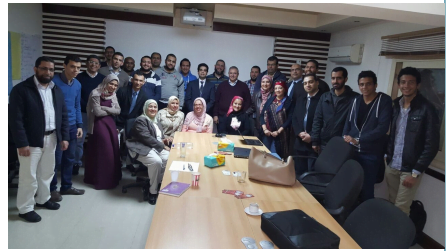The Cost of Complexity
Recently, whilst working with the Global Planning Team of a major oil company, we were asked, “What is the cost of complexity and what is the effective range on this cost?” At one level, the answer is easy; “It is the cost associated with having more than one customer and product. The more complex the supply chain, the higher the overall cost per unit supplied.” They then said, “Yes, but how do I know how much my costs will go down if I take products out of complexity?” There isn’t a simple answer to this question.
However, here we outline where cost is incurred as Product Range increases and therefore, what the opportunity might be to reduce cost through Stock Keeping Unit (SKU) rationalization. Whilst the numbers are fabrications and the assumptions made are significant, they are based on over 30 years of experience as operational managers and consultants.
Where Cost is Incurred
We know that as range increases so does cost; with skillful management and good advice, the converse is also true. While we may get economies of scale on fixed costs as we spread this over what (hopefully) is increased throughput, one could argue that if this is the case then the fixed costs were too high in the first place – for example, too much capability. This aside, as the range increases, so do the main drivers of cost within the business.
The Cost of Complexity is Important
Here we discuss how this occurs. We will take each of the main elements of cost in turn and then combine these into an overall result.
We know that sales revenue typically follows Pareto’s Law – a large percentage of sales are generated by a small percentage of customers and products. For example, a major photographic company discovered that 67% of their UK revenue came from just 1% of their customer / product combinations. This is an extreme example but 80% – 90% of sales resulting from 20% of the range are typical. In his book Competitive Manufacturing, Hal Mather suggests that as variety increases, assets increase in a linear fashion. Support costs on the other hand increase in an exponential fashion. Our projects have shown this to be true, but why is this important?
Detailed Cost to Serve (CTS) analysis of products and customers, show that most companies have a surprisingly wide range of products and customers that do not contribute to profitability. In fact, it is not unusual for 50% of the total product range to be (significantly) loss making. This situation is exacerbated as range (variety) increases.
Understanding the Cost of Variety (COV) and the CTS is important from a strategic perspective. Consider figure 2, if this nest of curves reflects a companies’ business then they would be very vulnerable to a competitor entering the market place with a range of products which equates to the profit maxima, i.e. about half the range and slightly lower prices.
What Drives Cost?
Purchasing
The cost of a purchasing function largely depends on the number of people employed, which in turn is (or should) be driven by the work involved. The activity drivers of this work are:
- Number of suppliers, time spent by supplier, which is seldom a uniform number being dependent on the maturity of the relationship
- Number of orders and lines placed
- Invoice queries
- Delivery reliability
In manufacturing companies, none of these are influenced by the finished goods range, except when new raw materials or component items are required. For resellers, the finished goods range (or catalogue) does have an impact on purchasing and procurement cost. In this example, we will assume this isn’t the case.
Production
Range can have a massive impact on production efficiency, effectiveness and cost. Consider process industries where many products are made using the same equipment, paint or oil. At the very least time is required when changing from one color or blend to another and there is material waste as the lines are flushed (or pigged) to prevent cross contamination. Therefore, there is a cost of changeover and set-up. The number of ‘changeovers’ depends on the number of orders which in turn is related to the batch size and number of items in the portfolio. Changeovers can be reduced by making larger batches but this has an adverse effect on inventory holding. In most process industries there is a secondary product set which is either bottling or packing. Again set-ups / changeovers are involved which are driven by the range.
Warehousing
The majority of warehousing costs are driven by the amount of stock to be stored (static capacity) and the throughput (dynamic capacity). The amount of inventory in the warehouse in turn depends on policy, for example, availability (fill rate), batch size and range. Safety stock is used to provide availability, whilst the batch size is usually the result of ‘flawed’ economic order quantity calculations, production economies or transport efficiencies. A square root relationship exists between range and safety stock; theoretically, we will have in the region of 10 times more safety stock if the range is 100 items rather than 1. In reality, this isn’t quite so extreme, but it is a good ‘rule of thumb’. So product proliferation results in more space being required and more cost.
As well as having to store more stock, there is obviously a requirement to be able to fulfill customer order; access to the stock is required for ‘picking’. In an ideal world all material would be immediately to hand and with some picking regimes (e.g. Automatic Storage and Retrieval System (ASRS) or order forwarding) this is almost achievable. However, in most cases a larger range results in more (or bigger) pick faces; again this drives warehouse size and cost.
The effect of range on labor costs is more pronounced. Consider a case where a company only sells one product. Throughput is high, customer orders are probably shipped in full pallets; the number of orders and order-lines is low. Hence the amount of activity required to fulfill an order is low. Assume now that a second item is added to the range, sales increase by 50% but demand is now split between the two items. The number of order lines doubles and so does the work; but customers are now ordering in sub-pallet quantities, travel distances have increased and more care is needed to ensure that the right quantity of the right product is picked and dispatched. The work content has more than doubled – it may have increased by a factor of 4 or 5. Of course, we can add productivity aids such as Pick by Light or Voice Picking but all these have a cost.
Similar logic applies for ‘goods-in’, replenishment and stock integrity processes.
Transport
Transport cost is obviously dependent on fuel prices, labor rates etc, but what drives these requirements is complex. Perhaps the best way to look at what influences transport cost is by considering what impacts time. For example, given a uniform set of road-conditions, total transport time is dictated by driver briefing / debriefing, loading (in some cases), the route distance, the number of ‘drops’ (deliveries) and the time spent at each drop. It is difficult to gauge the effect of range on each of these parameters, but one scenario might be that as range (and sales) increases, more customers want products resulting in the number of deliveries increasing. This may or may not have an impact on the total transport time required. If the new customers are in the same area, then drop density goes up and so should efficiency. However, the new customers might increase the distance and will increase the number of drops which in turn leads to more time being required.
Inventory
Inventory investment depends on the service level required: availability (indirectly, lead-time to customer), forecas tability, supplier reliability, replenishment lead-time and batch size / order policy. Range will impact all the main elements of stock; cycle, safety and in transit / WIP. Assuming that all items are made on the same line and unless changes are made to make smaller batches economically, then the amount of cycle stock (half the batch size) will increase in proportion to the range. Safety stock will change by an amount approximately in the line with the square root of the difference between the old and the new range. In transit and WIP will remain largely unchanged. However, now more items need to be planned / forecasted, made and stocked, which in turn will drive the amount of Supply Chain Planning labor required. Furthermore, there is an increased chance of inaccurate forecast leading to overstocks and possible obsolescence.
Customer Service
Customer service cost is driven by the number of customers, the mode of order taking, the number of orders / lines, errors and queries. We have already seen that as business grows the number of customers increases, often fuelled by the introduction of new products. These in turn lead to more order lines, more complex invoices, hence additional resource requirements in customer services / accounts.
Summary & Conclusions
Range has a fundamental effect on the Supply Chain Cost of Complexity. Many businesses do not understand how these costs are built-up or what drives them, most concentrate on revenue growth and are surprised when profits are lower than expected.
Based on the assumptions and arguments described we have built a simple model which shows how Supply Chain Costs increase with complexity. This bares a striking resemblance to Hal Mathers’ work.
Given the current economic climate and the requirements for cash, we believe that companies should understand their CTS and Cost of Complexity so that they can take appropriate action.
Derek is the Practice Lead for Supply Chain Design Services with Unipart’s Consulting Division (UEP). In this role he is responsible for delivery solutions for internal and external clients, competence development and looking for new opportunities. Derek is a popular speaker and educator. He is an active member of both the Chartered Institute of Logistics & Transport (CILT UK) and the Institute of Operations Management (IOM) and regularly contributes to articles and leading practice papers; he also spent 10 years tutoring and directing Graduate Summer Schools.
Contact him at derek.thomason@unipart.co.uk







